A relative newcomer to the body armor market, Predator Armor is based in Delta, Utah, where it makes and sells body armor plates, plate carriers, and other accessories. When I was asked if I might review some of the Predator product line, I thought to myself, “Body Armor? Me?”
As in, what the hell do I know about body armor?
And then I remembered Summer 2020 when riots blossomed across this country and a disturbing number of state governors and big city mayors seemed to not only allow but essentially encourage the unrest, the violence, and the arson. So, I agreed to review the armor as a way to begin my education in a whole different level of personal safety in preparation for the (potential) next round of troubled times in America. (Summer 2021 before mid-term elections?)
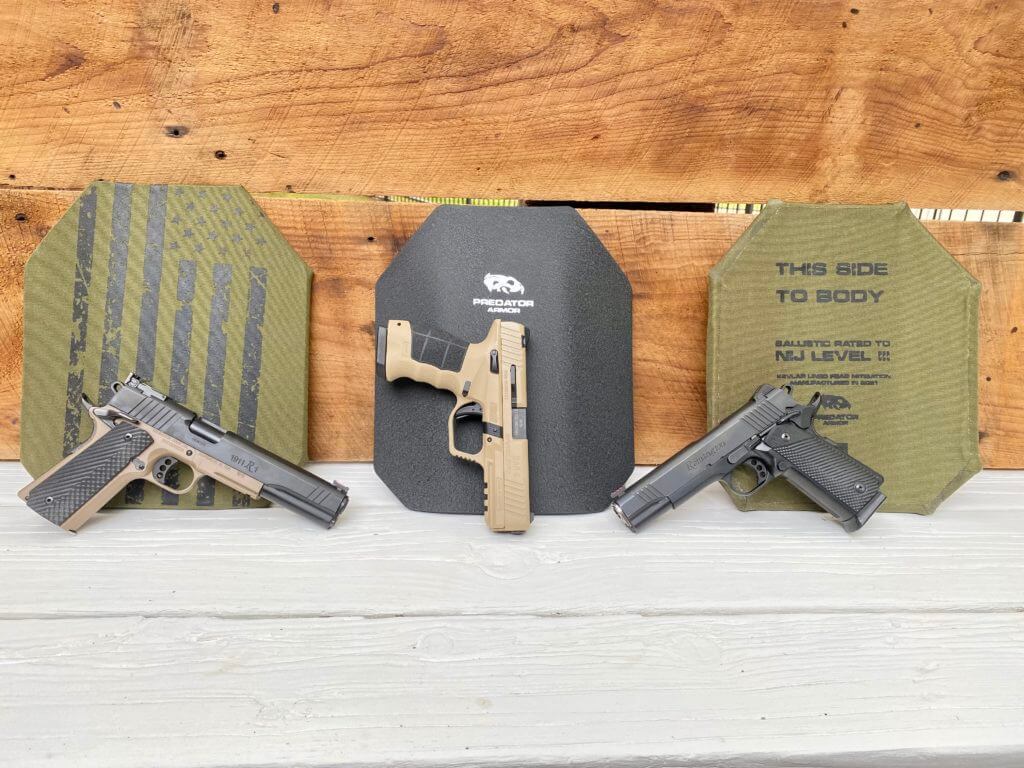
For testing and evaluation purposes Predator Armor sent me:
–One Standard Cut Armor Plate, Level III;
–Two Cut Armor Plates, Wrapped in a Kevlar-Based material to mitigate fragmentation, Level III;
–And one Predator Armor Minuteman Carrier tactical vest to hold the plates.
The three armor plates were constructed from 0.25-inch-thick ballistic steel rated to provide Level III protection based upon National Institute of Justice 0101.06 standards. According to Predator Armor, the Level III designation means the plates can stop “SIX (6) spaced shots from 7.62×51 NATO FMJ (U.S. Military designation M80) rounds traveling up to 2,780 ft/s.”
Obviously, the ability to stop six rounds of 7.62×51 also means it will handle most handguns rounds. It will also stop other centerfire rifle rounds with a muzzle velocity of under 2,780 feet per second.
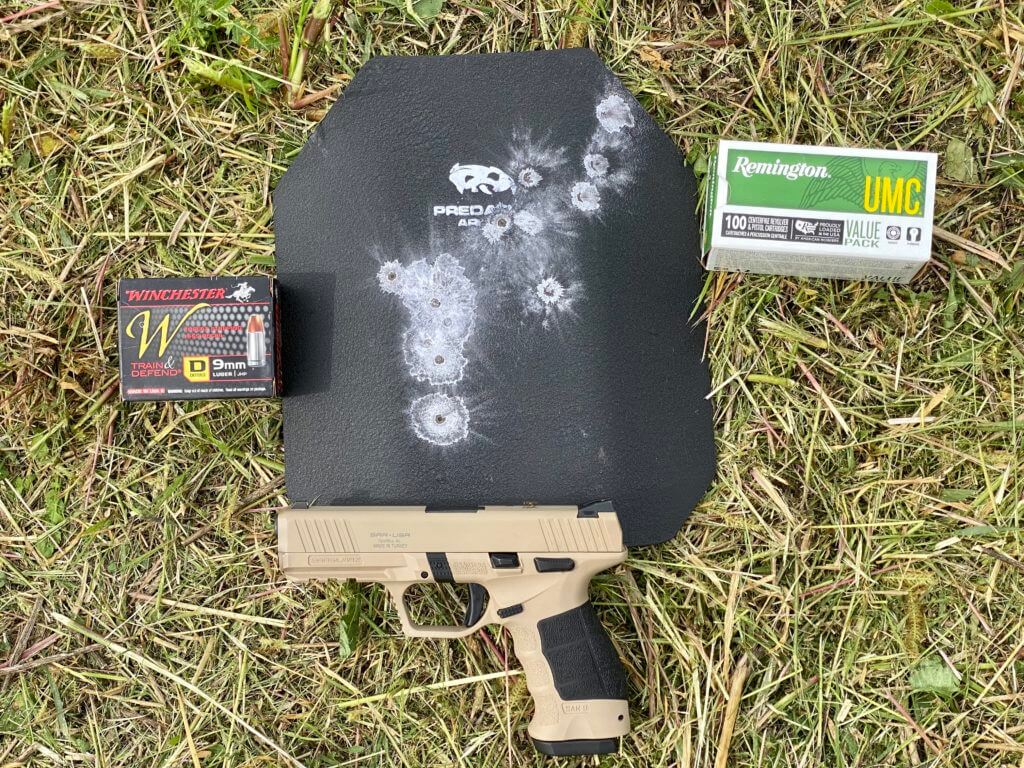
To test the Predator Armor plates, I started with handguns in three different calibers, shooting the armor plates with both a practice and a self-defense ammunition in each caliber.
The pistols and ammunition I used were:
9MM: Pistol — SAR-USA SAR 9; Ammunition — Remington UMC Range firing a 115-grain Full Metal Jacket (FMJ) bullet, and Winchester Train and Defend loaded with a 147-grain jacketed hollow point.
10MM: Pistol — Remington Arms R1 Hunter; Ammunition — Winchester Target and a 180-grain FMJ, and Federal Premium Solid Core personal defense firing and a 200-grain Syntech-coated lead bullet.
45 AUTO: Pistol — Remington Arms R1 Enhanced 1911; Ammunition — Remington UMC range with a 185-grain FMJ bullet, and Federal Premium HST self-defense and its 230-grain HST bullet.
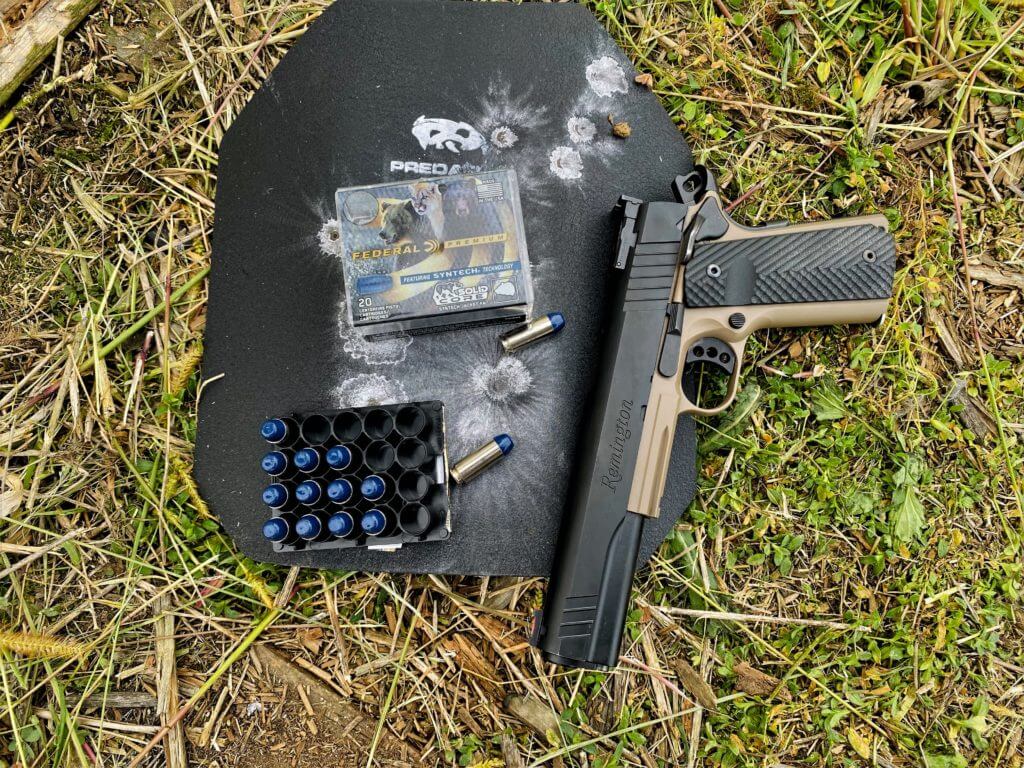
I shot both the black armor plate and the green-covered plate at five and ten yards with each of the guns and ammunition types. Usually, I shot five rounds, although I put ten rounds of the 9MM Winchester Train and Defend into the black armor plate and seven rounds of the 45 AUTO Federal HST into the green plate, and in both cases, the distance was 10 yards.
All the handgun ammunition fairly pinged off the plates. On the black plate, the best the harder FMJ bullets did was to mar the finish.
Of course, the bullets fragmented when they impacted. As seen in the photos, the light-colored wood behind the black plate revealed the fragments traveling beyond the plate itself. Any hits on the edges also directed the fragments away from the plate, though some would come close to and possibly hit the plate wearer.
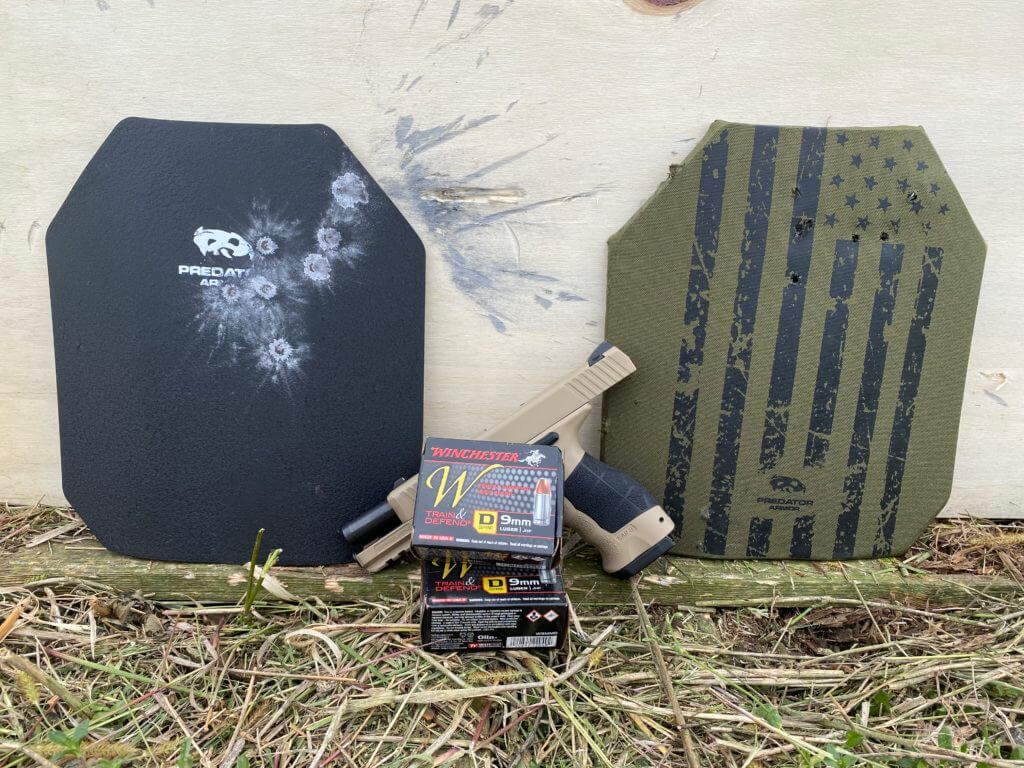
The area above the black plate in the handgun test photo shows a definite fragmentation splatter. It should be noted, though, that the top edge of the plate was angled back into the wood. When the plate was positioned nearly vertical to the ground, the splash above was much reduced. However, the plate kept falling over. So, I leaned it against the wood and the fragmentation tracked up the plate.
The plate covered with the green Kevlar-based wrap showed very little splash, although that plate took as many rounds as the black plate. One exception was a Federal Solid Core 10MM round shot at ten yards that clipped the right edge of the green plate, and fragments blew out on that side.
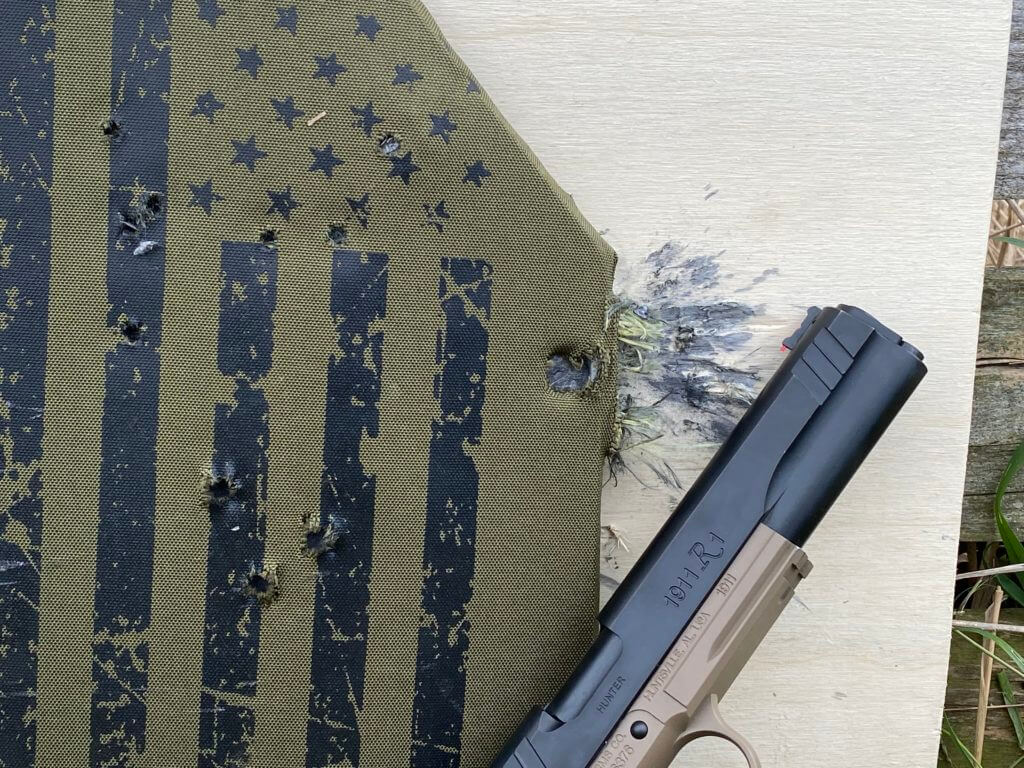
Next, I tested the two plates against rounds fired from a Benelli Lupo bolt action (a review of which is being written now for this site) chambered in 30-06 SPRG. I used Winchester Ballistic Silvertip ammunition loaded with a 168-grain rapid expansion, poly-tipped bullet.
First, though, I cleaned off the black plate and then spray painted it a brighter blue so I could see the ammunition’s impact. I set both plates at 50 yards and fired three rounds of the Winchester Ballistic Silvertip into each plate.
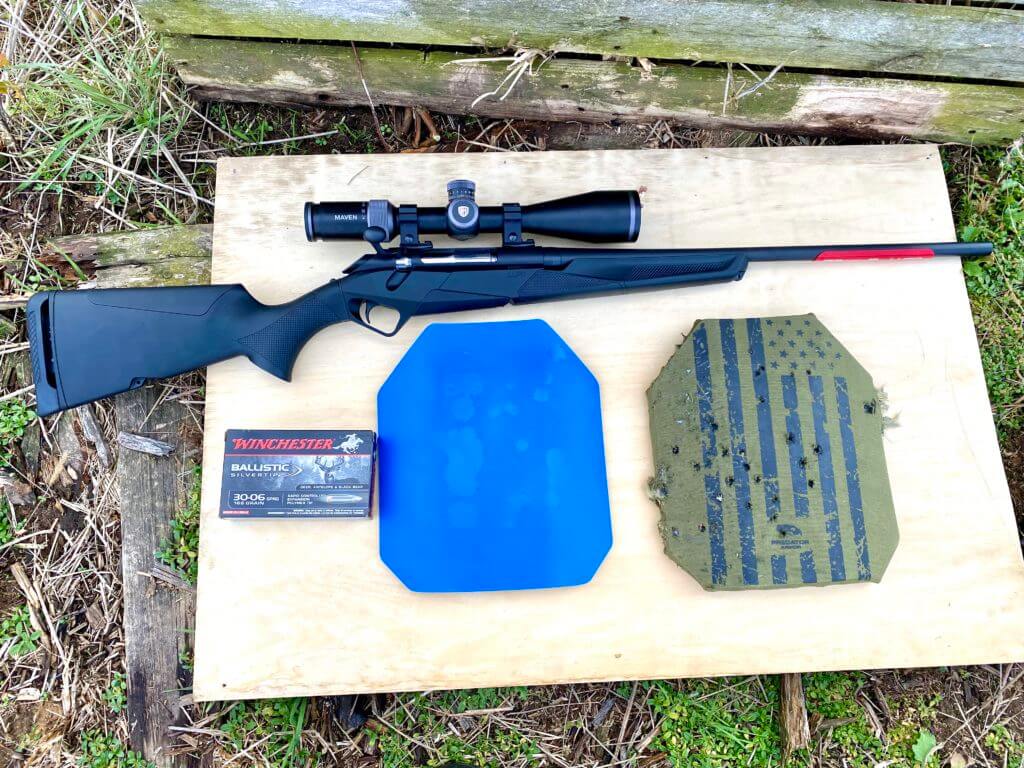
On the black plate, the three rounds of Ballistic Silvertip were clustered close, and they actually dented the front of the plate slightly; one round just dimpled the back of the plate. With the plate leaned up against the wood, there was a good deal of fragmentation that splashed and cut into the wood above the black plate to form a halo of sorts. Much of that, no doubt, was because the Silvertip rounds were designed to open up fast in a game animal.
When shot into ballistic steel, of course, they opened up even faster.
The same three rounds in the green plate only showed a minimum of fragmentation splash. This was the same plate that had taken dozens of handgun rounds earlier, too, so it was already pocked and cut internally. Even so, it grabbed up what must’ve been a massive fragging from those three poly-tipped bullets.
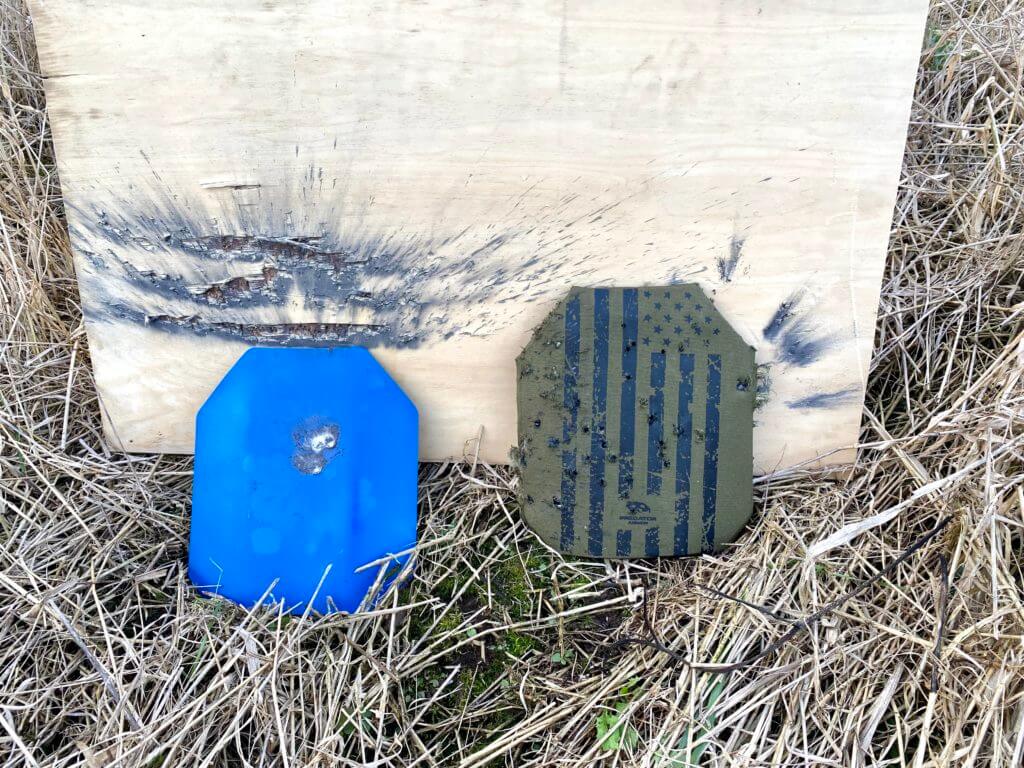
If I was buying from Predator Armor, I would select the plates wrapped in the green Kevlar-based material and pay the extra money. The ability of these plates to corral the bullet fragmentation was impressive.
Last, I wore the two plates using the Predator Armor Minuteman Carrier. It was certainly a load, with each plate weighing approximately 7.5 pounds. But the carrier adjusted nicely to my fit my body and the weight was evenly distributed. I wore the plates and carrier around the house, on a two-mile walk, and during some moving and shooting drills at my local range. It was actually quite comfortable, though I certainly knew I was toting pounds plural.
I was interested to see what effect the plates and the carrier might have on my shooting during drills. So, I set up targets and then positioned barriers at five and eight yards away, moved up to a barrier and shot, ducked behind it, and quickly moved to the next barrier and shot around it. Then I stood in front of the targets at ten yards, shot, and moved towards the targets for ten shots. I reloaded and shot another ten rounds while backing away from the targets.
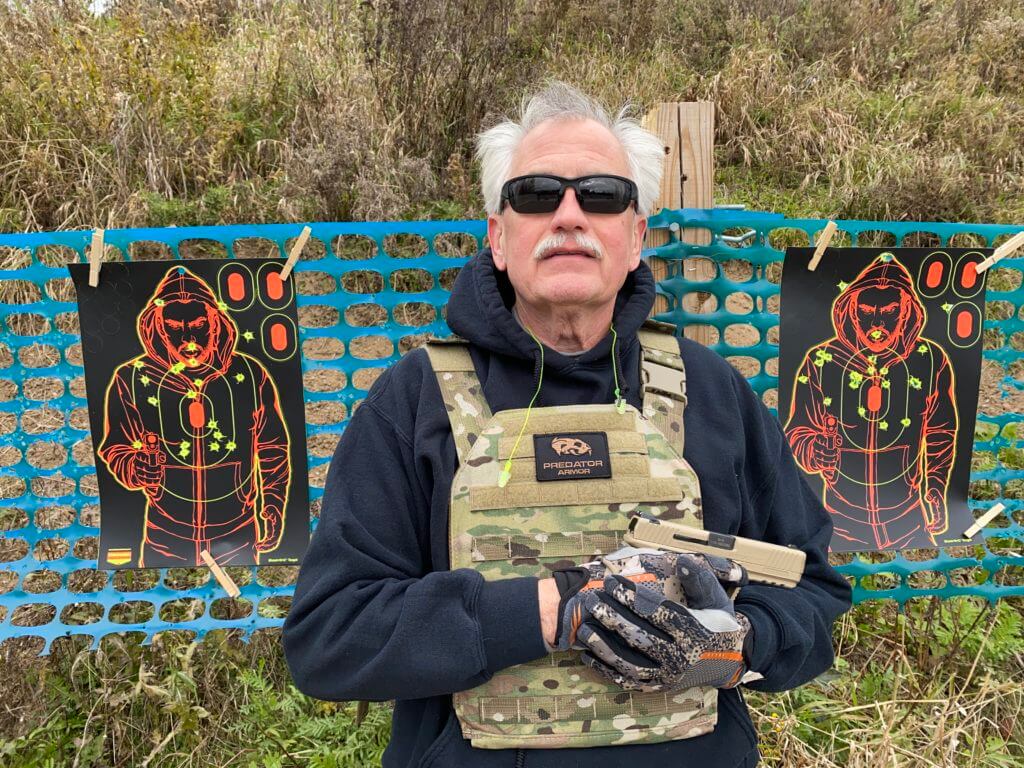
The plates and carrier really had no effect on my shooting, the exception being when I twisted suddenly and the weight on the plates moved to one side or the other. But that was easily adjusted for simply by shifting my point of aim slightly away from the direction the weight was moving toward.
The other thing I had to adjust to was starting off in low ready. Here the front plate came between my arms, and I needed to hold them apart more so than I usually do. Not a big deal.
The single 10×12-inch black plates sell for $65 each on the Predator Armor website, the Kevlar-wrapped variety for $110.00 each, while the Minuteman Carrier I used is sold for $160.00. Pads to go under the plates as well as other accessories are also available, as well as package deals of plates and carriers.
For me, body armor is pretty much a worst-case scenario option. And if the worst-case hits the fan? I’d put on the Predator Armor in a second and feel much safer for the added and impressive protection.

Are they CERTIFIED plates or “meets NIJ standards” plates?
What is the performance against m193? I bet there’s a million or so rounds of that setting in people’s homes. Steel plates don’t typically fare as well against it.
While they certainly are affordable, they still do nothing to stop a head or groin shot.
You just have to adjust them to cover the body parts you think are important.